Ninoy’s home
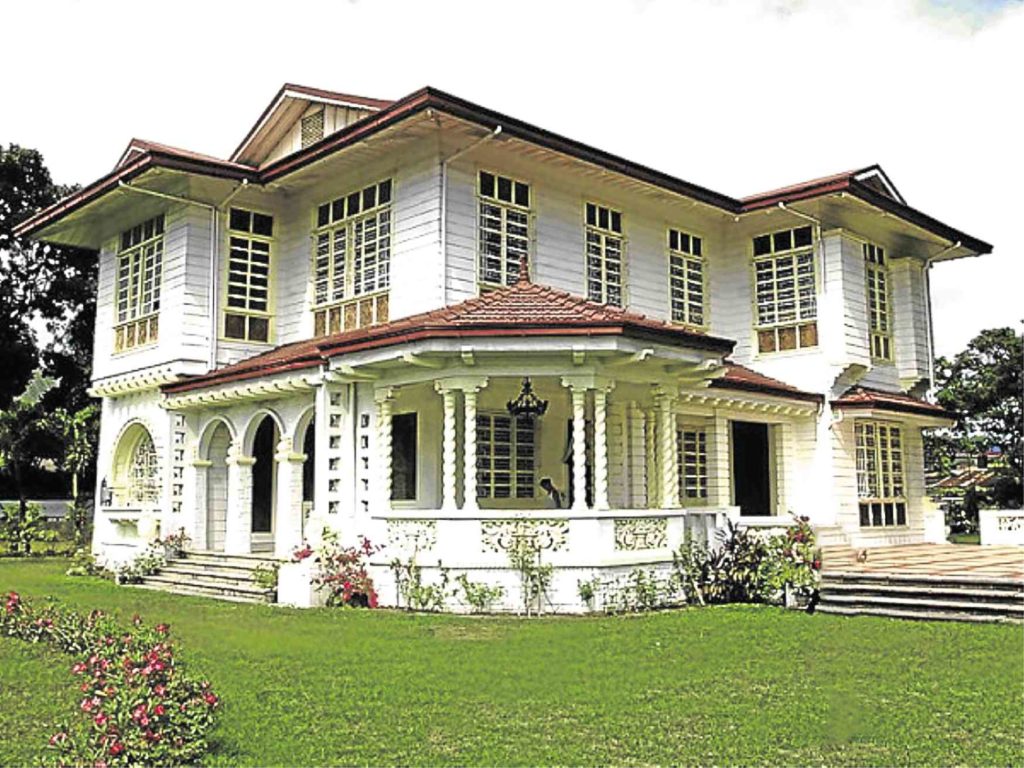
Ancestral house of the Aquino family in Concepcion, Tarlac (PDI photo)
(Editor’s note: As we commemorate the 34th death anniversary of Sen. Benigno “Ninoy” Aquino Jr. on August 21, Inquirer Property is featuring the Aquino residence in Tarlac which was declared as a historical site in 1987 by the National Historical Commission of the Philippines, then called National Historical Institute.)
Often, the places where heroes were born, imprisoned, or said to have lived define the historical significance of a particular locale.
These homes and towns are eventually immortalized through the shrines and landmark structures that blatantly pronounce the role these locations play in the country’s rich history.
An example would be the ancestral house of national hero Benigno “Ninoy” Aquino Jr. in the town of Concepcion in Tarlac, which has been the subject of preservation and research. It was declared a historical site because of its national significance, being the home of three generations of Aquinos who have served the Filipino people.
In 2011, then President Benigno “Noynoy” Aquino III led the unveiling of a historical marker at the “Tahanan ng Pamilyang Aquino (House of the Aquino Family),” which was built in 1939.
Article continues after this advertisement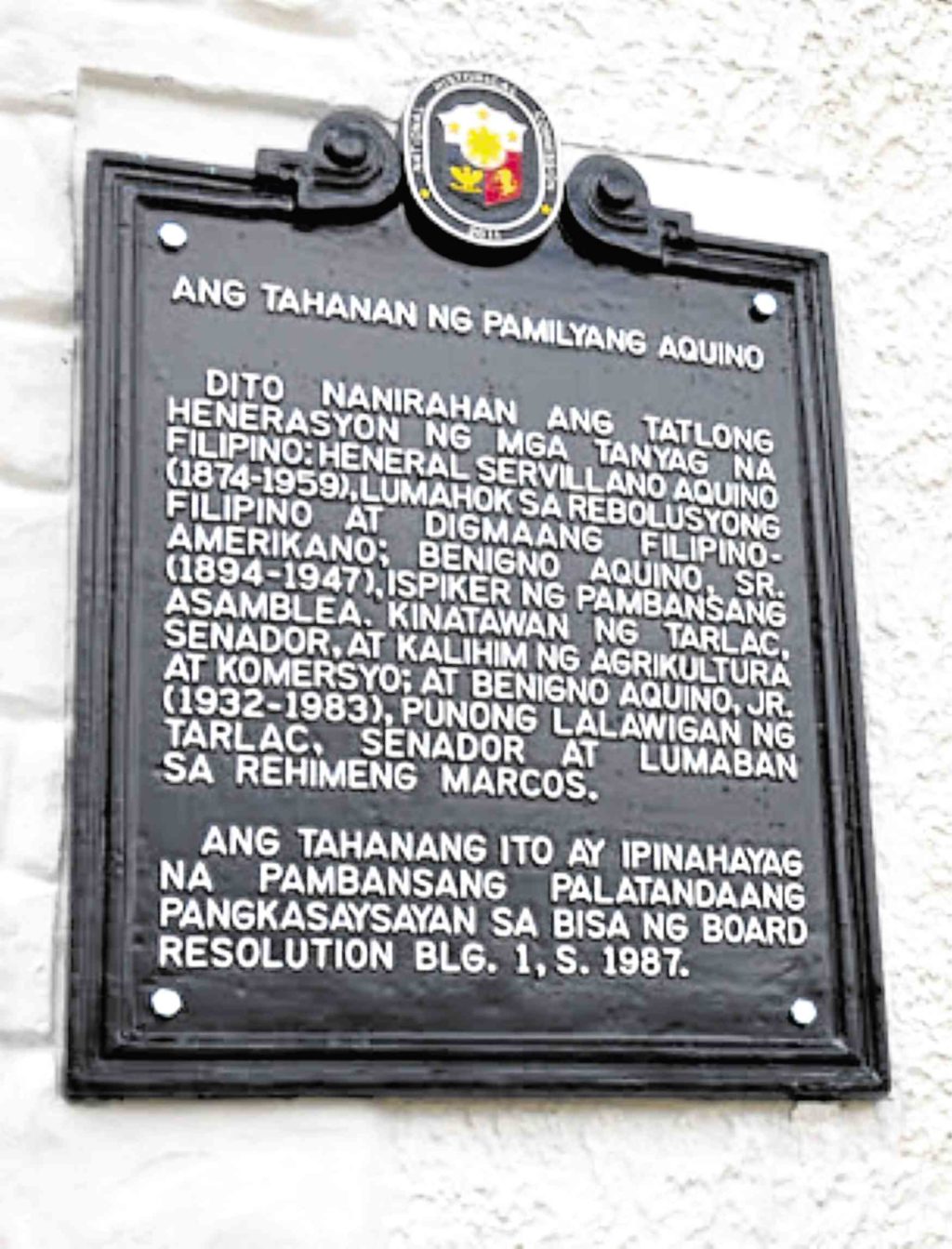
Historical marker at the ancestral house of the Aquino family (From NHCP website)
Gen. Servillano Aquino, Noynoy’s great grandfather, was a Katipunero who joined the revolution against the Spaniards. He also fought against the Americans during the Filipino-American war.
Article continues after this advertisementNoynoy’s grandfather, Benigno Aquino Sr., also lived in the house and was a speaker of the national assembly, a representative of Tarlac, a senator and a secretary of agriculture and commerce.
Former Sen. Ninoy, father of Noynoy and the most prominent of the Aquinos, also lived in the house when he was mayor of the town of Concepcion.
A visit to the Aquino house offers a glimpse into his youth, their surroundings and living quarters, including Ninoy’s well-stocked library.
As a senator, Ninoy fought the Marcos regime and exposed the alleged excesses of the dictator’s government. He eventually became the first of thousands arrested and imprisoned during the martial law regime.
After his return from exile in the United States, Ninoy was gunned down by assassins at the tarmac of the old Manila International Airport on Aug. 21, 1983.
The tragic event led to the 1986 EDSA People Power Revolution and propelled his wife, Cory, to presidency three years later, restoring democracy in the country. This part of history can be relived by the pre-Edsa and post-Edsa generations at the Aquino Center in Tarlac City, just north of Concepcion.
Located at the Luisita Industrial Park, the Aquino Center houses a museum that displays the complete memorabilia of Cory, including rare photographs, copies of speeches, other documents and personal belongings of the Aquino couple. It was inaugurated on Ninoy’s 18th death anniversary in 2001.
Also found in the Aquino Center are function rooms for seminars and training, an audio-visual room, a landmark tower, a chapel, ballroom and the Ninoy Aquino Library.
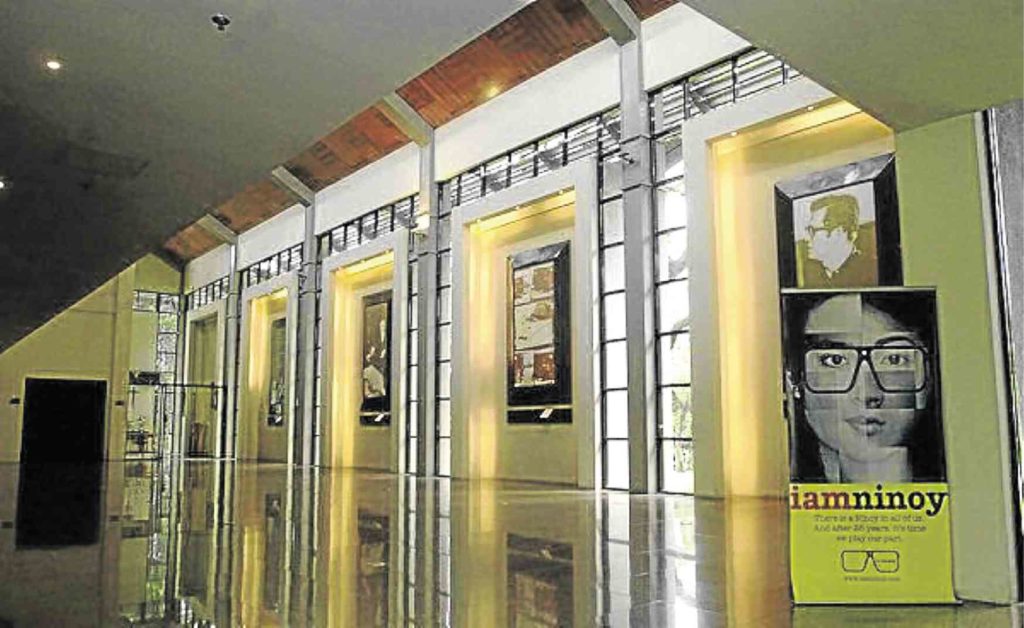
Photo exhibit at the Aquino Center in Tarlac City (PDI photo)
The museum, which is divided into four chambers, opens to a corner with old photographs of their respective families.
Two chambers cover Cory’s ascent to the presidency until the end of her term in 1992. These sections carry Cory’s major speeches, gifts she received while in office, and her paintings mostly of flowers and her children.
One chamber contains Ninoy’s photos and memorabilia from 1950 to 1971 or before the declaration of martial law by then President Ferdinand Marcos, while another displays materials about Ninoy’s arrest, exile and assassination (1972-1983).
On display in a glass case are Ninoy’s bloodied white jumpsuit and soiled boots that he wore on the day of his assassination. Even Ninoy’s prison cell in Fort Bonifacio had been recreated in the musuem.
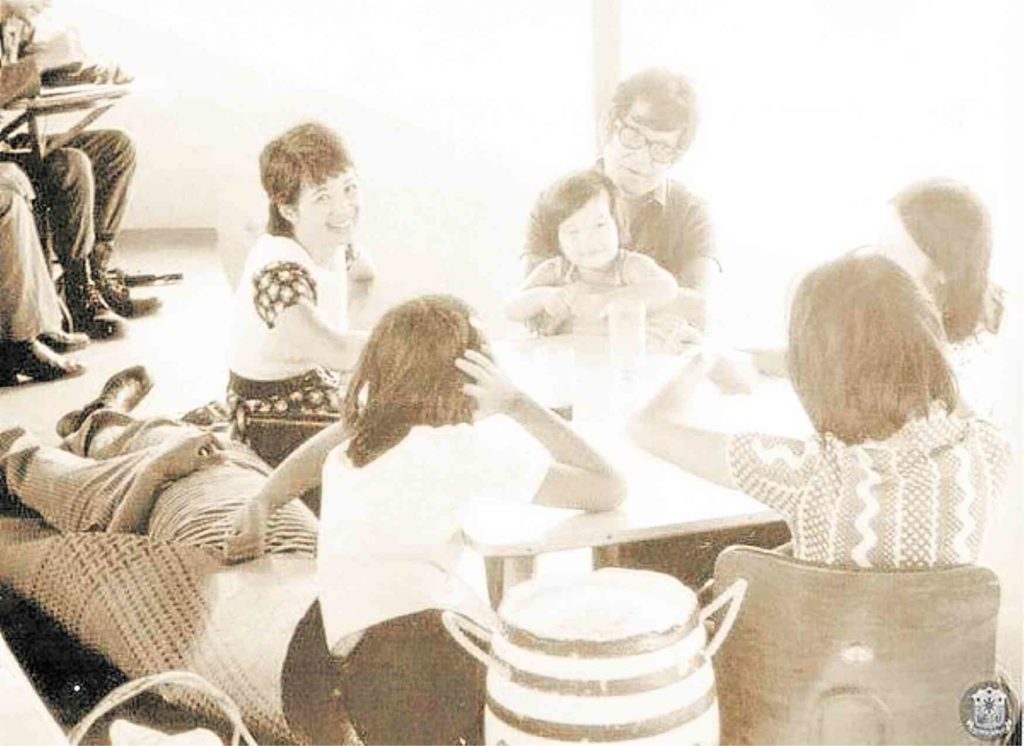
Cory Aquino and her kids visited Ninoy Aquino in his cell at Fort Bonifacio in 1977. (Photo from Official Gazette)
His real detention cell at Fort Bonifacio is a 4 by 5-meter room inside Building No. 2 at the Legazpi Compound, which now houses the Army’s Intelligence Support Group.
It was where Ninoy was incarcerated when martial law was declared on Sept. 21, 1972, until March 12, 1973 and again on Aug. 27, 1973 until 1980, when he was allowed by Marcos to seek medical treatment in the US, where he lived in exile for three years.
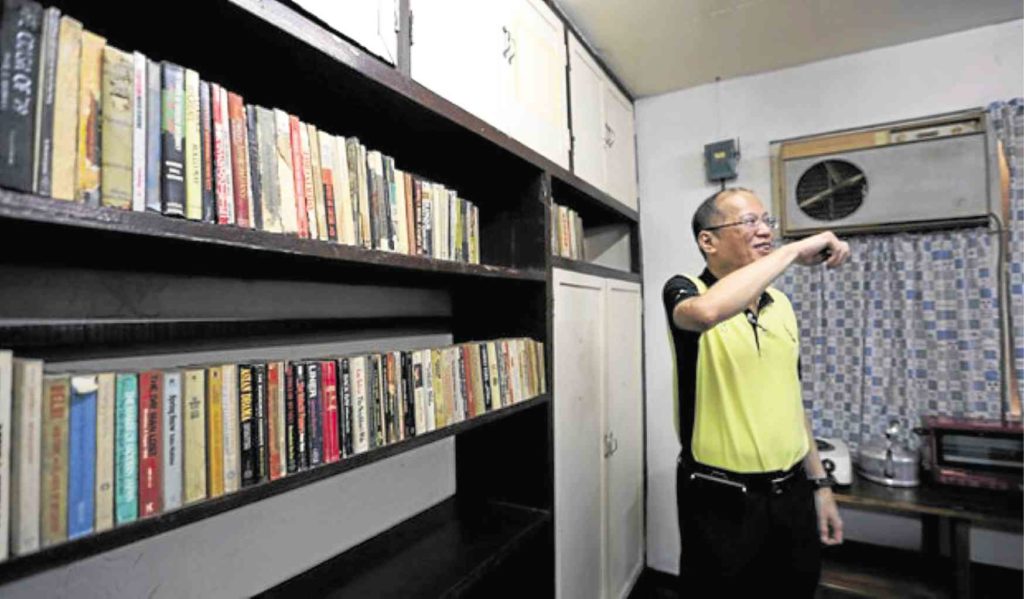
Bookshelves at the former detention cell of Ninoy Aquino at Fort Bonifacio (Photo from pcoo.gov.ph)
Recent photographs show the cell has a cot, table and chairs, shelves lined with books, and even a makeshift kitchen, among others. Enlarged black-and-white photographs of Ninoy taken while he was inside the room are on the walls.
On Mar. 12, 1973, Ninoy, together with Sen. Jose W. Diokno, was flown from Fort Bonifacio to Fort Magsaysay in Laur, Nueva Ecija to isolate them from their supporters in Metro Manila, according to military accounts.
They were kept in separate cells measuring 3 by 4 meters each at the military security detachment compound, with wooden jalousie windows completely shut. These were nailed and covered with thick plywood reinforced by iron grills. There was no electric fan and light was coming only from a ceiling lamp.
The fort covers mountainous portions of the Sierra Madre range on the east of Central Luzon, including Taclang Damulag, which is the highest peak serving as a gunnery range.
From his prison cell, Ninoy continued to write about the excesses of martial rule. He also went on a 40-day hunger strike that forced the military to return him and Diokno to Fort Bonifacio.
On Feb. 25, 2003, the prison facility was reconstructed and converted into a shrine called the “Aquino-Diokno Memorial.” Found in the shrine are life-size wax figures of Aquino and Diokno, in their undergarments, in their respective cells.
On Sept. 21, 2012, then President Aquino opened the AFP Center for Human Rights Dialogue (AFP-HRD) at the reconstructed detention cell in Fort Magsaysay. The memorial for the two leading figures in the fight against the strongman Marcos martial rule was not only for “Pepe and Ninoy, but for all of us Filipinos,” the late Cory had said.
Sources: Inquirer Archives, rtvm.gov.ph
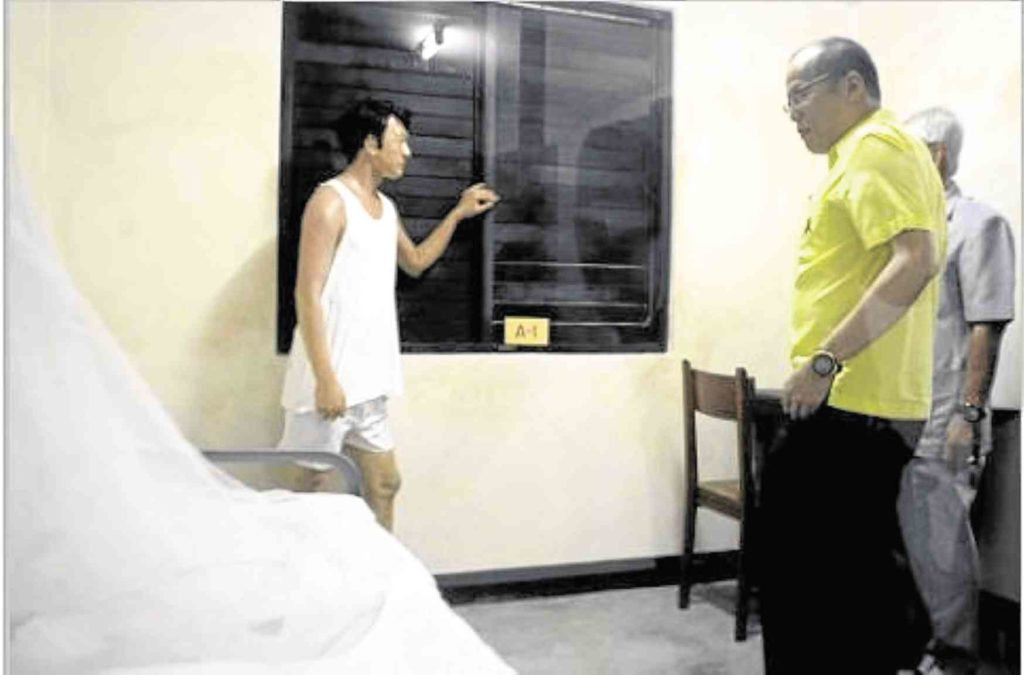
Former President Aquino tours the refurbished Aquino-Diokno Memorial at Fort Magsaysay (Sept 21 2012, Malacanang photo)